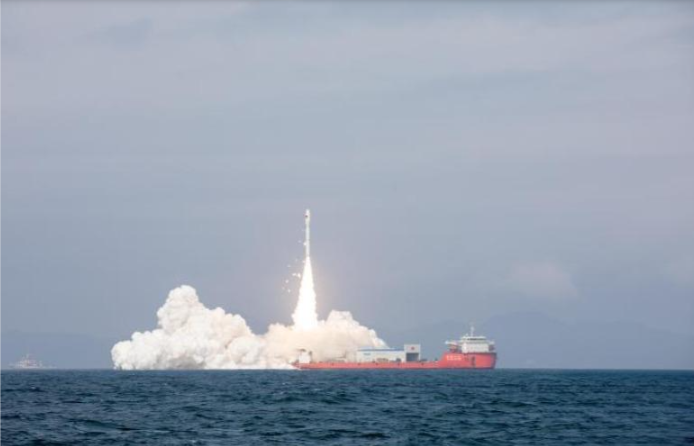On February 3, China successfully launched Jielong-3, a small carrier rocket with powerful payload capacity at competitive cost.
According toChina NewsJielong-3 was launched by the Taiyuan Satellite Launch Center off the coast of Yangjiang (in Guangdong Province, southern China), to put 9 satellites into orbit. This is the third launch of Jielong-3, after the first in December 2022 and the second a month ago.

The Jielong-3 rocket carrying nine satellites was successfully launched from the sea near Yangjiang, Guangdong province, China, on February 3.
The Jielong-3 rocket, developed by the China Aerospace Science and Technology Corporation (CASC), is capable of carrying a payload of 1,500kg into an orbit of 500km, and can be launched from sea or land.
CASC has claimed that Jielong-3 can carry more than 20 satellites at a launch cost of less than $10,000/kg, a globally competitive price in the small rocket segment.
According toReutersChinese President Xi Jinping has called for the expansion of strategic industries, including the commercial space sector, seeing it as key to building "satellite constellations" for communications, remote sensing and positioning.
Key to building China's commercial satellite network is its ability to expand its launch system, diversify its rockets to accommodate different payload sizes, reduce launch costs, and increase the number of satellite launch sites, including building more spaceports and using sea-based launch vehicles.
In addition to CASC, China's commercial satellite launch sector also includes many other companies such as Galactic Energy. The company's Ceres-1 rocket made its first flight in November 2020. The highlight of Ceres-1 is its ability to carry a 300kg payload to an orbit of 500km.
Galactic Energy has planned seven Ceres-1 launches in 2023, compared to four in 2020-2022.
In China’s commercial space race, Landspace is a must-see. In 2023, the company made history with its Zhuque-2 rocket, successfully launching the world’s first satellite using methane and liquid oxygen as fuel. This is considered a breakthrough in the use of cheap rocket fuel in China.
In the large-size rocket market, Orienspace, founded in 2020, made a breakthrough in January this year with the launch of the Gravity-1 rocket from a ship off the coast of Shandong province (eastern China).
Gravity-1 is capable of delivering payloads of up to 6,500kg into low Earth orbit, making it the most powerful launch vehicle developed by a Chinese private enterprise.
Small-class rockets can carry a payload of 2,000kg, suitable for small and micro satellites. While medium-class rockets can carry a payload of 20,000kg, suitable for Earth observation satellites, telecommunications and scientific missions.
Finally, there are heavy-lift rockets that can carry payloads of more than 20,000kg, often used for interplanetary missions, space station installations and launching large satellites. The Falcon rocket developed by SpaceX has a capacity of 64,000kg into orbit.
TH (according to VTC News)